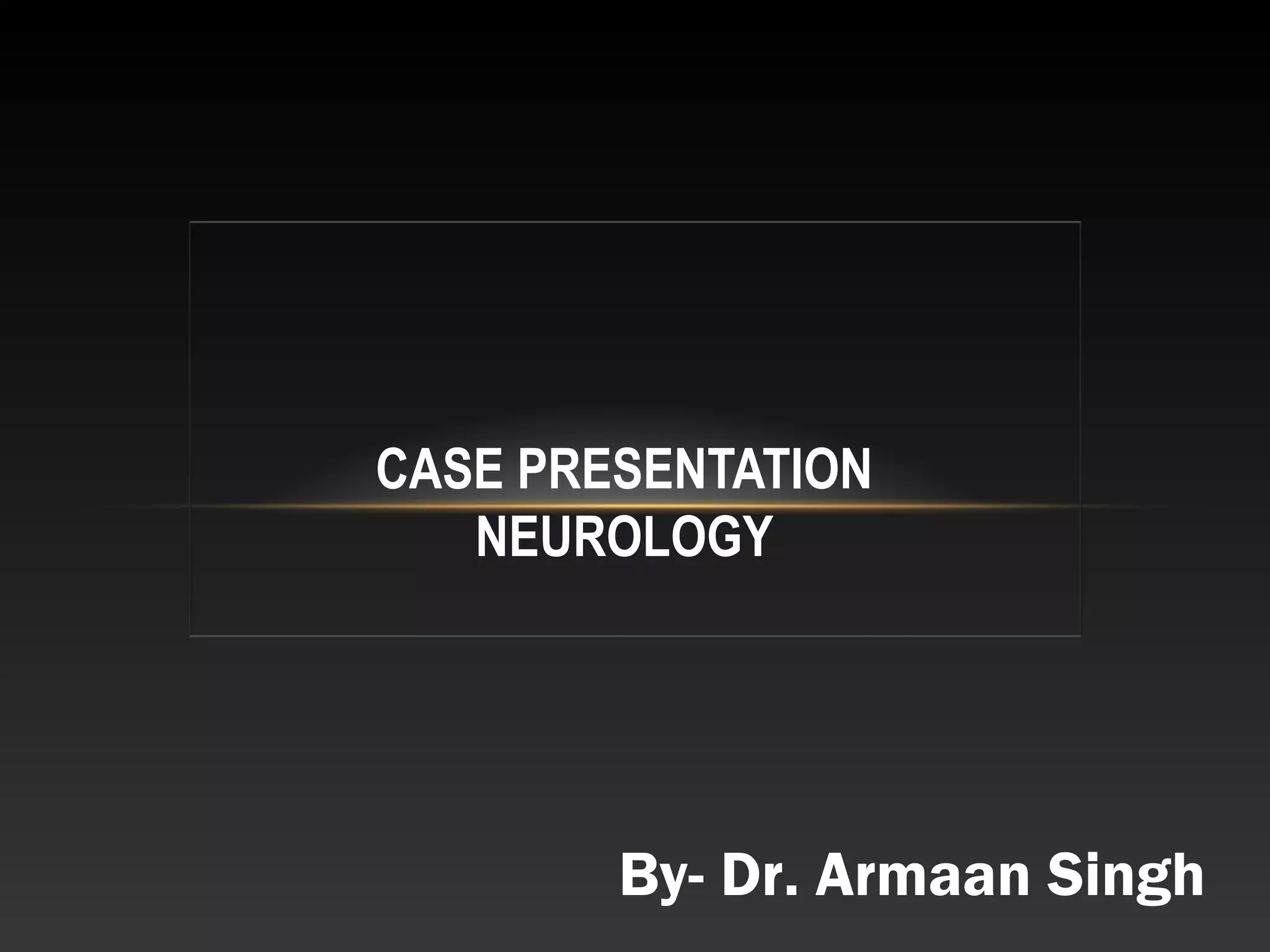This patient, a 65-year-old male, presented with 6 months of difficulty walking and 4 months of forgetfulness and hallucinations. Examination found he was semiconscious with rigidity and myoclonic jerks. Imaging and tests were consistent with a prion disease like Creutzfeldt-Jakob disease (CJD). A lumbar puncture found elevated proteins. He was diagnosed with a rapidly progressive neurodegenerative condition likely CJD.





























![TYPES OF SLOW VIRUS INFECTIONS
• Prion diseases are categorized into three groups: sporadic, (85%), hereditary &acquired(15%)
• 15% consist of hereditary forms (hereditary Creutzfeldt-Jakob disease [CJD], Gerstmann-
Straussler-Scheinker disease, fatal familial insomnia) and acquired forms.
• Acquired forms may be transmitted iatrogenically (through human growth hormone therapy, dura
mater grafts, or other neurosurgical procedures) or through cannibalism (kuru) , variant CJD
(vCJD) in humans, scrapie in sheep, and bovine spongiform encephalopathy (BSE) in cattle.](https://image.slidesharecdn.com/casepresentationneurology-150217111553-conversion-gate01/75/Case-presentation-neurology-30-2048.jpg)







